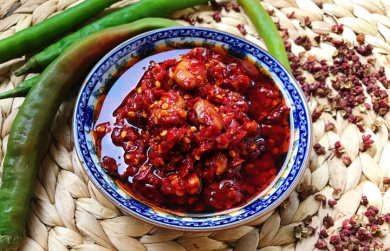How Long Does a Cooked Gammon Last in the Fridge Safely

While cooked gammon is a holiday favorite, how should leftovers be stored? Both refrigeration duration and storage methods require special attention.
What's the safe storage time for cooked ham in the refrigerator?
The refrigeration storage period for cooked gammon is generally 3 - 4 days (for the whole uncut piece). If it has been sliced or cubed, the storage period is shortened to 2 - 3 days. Here are the specific storage durations and techniques:
Whole Piece Keeps Longer
Wrap the uncut cooked gammon tightly with plastic wrap or put it in a sealed container. The refrigeration temperature should be stably below 4°C. The flavor is at its best within 3 days. On the 4th day, it is recommended to thoroughly heat it before consumption.
Pay Attention to Moisture Prevention After Cutting
The cut surface exposed to air is prone to bacteria growth. After slicing, it is advisable to first blot the surface juice with kitchen paper, then stack the slices with paper in between and seal them for refrigeration to avoid the meat sticking together and spoiling.
Little Tips for Freezing to Preserve Freshness
If you want to extend the storage period to 1 - 2 months, you can divide the gammon into portions according to each meal's serving size and put them into plastic bags. Evacuate the air and then freeze. When thawing, move it to the refrigerator compartment the night before. When cooking, add some stock or sauce to make up for the moisture loss.
Should I slice cooked gammon before refrigerating?
My suggestion is: Choose flexibly according to the situation.
Situations for Slicing
If you plan to finish it within 2 days: Slice the cooked gammon and put the slices into a sealed box. Place kitchen paper between each layer to prevent moisture. You can take and use it whenever you need.
If you are going to make sandwiches or cold platters: Slice it in advance and refrigerate. It will be more convenient when you eat.
Situations without Slicing
If you want to keep it for more than 3 days: Wrap the whole piece tightly with plastic wrap and refrigerate. Cut as much as you need each time and wrap the remaining part quickly.
If the surface of the gammon is glazed with sauce: Storing it as a whole piece can protect the sauce from sticking to the box and avoid waste.
Pay Attention to These Three Details
Scald the knife and cutting board used for slicing with boiling water first to avoid bacterial contamination.
When refrigerating, try to spread the slices flat. Don't stack the slices too thick, or they will easily stick together.
If the sliced gammon has been stored for more than 2 days, fry it in a pan or heat it in the microwave for 10 seconds before eating to make it safer.

How can you tell if cooked gammon has gone bad?
To determine if cooked gammon has gone bad, just keep these points in mind:
Check the smell
Spoiled cooked gammon will emit an obvious sour or putrid odor. If there is a pungent and abnormal smell when you get close to it, discard it immediately. Fresh gammon usually has a faint smoky or salty aroma and no irritating smell.
Examine the surface condition
Normal cooked gammon has firm meat, typically pink or light brown in color. If grayish-green patches, a sticky mucus layer, or blackened edges appear on the surface, it is very likely that the gammon has spoiled.
Feel the texture
Gently press the gammon with your finger. When it's fresh, the texture should be moist but not overly soft and mushy. If the surface feels sticky, doesn't bounce back after pressing, or even shows stringy substances, it indicates that bacteria have started to grow inside.
How long can cooked gammon sit out at room temperature?
Don't let it sit out at room temperature for more than 2 hours. Especially when the temperature in the kitchen exceeds 30°C in summer, you must deal with it within 1 hour.
During a family gathering last year, I left the leftover gammon at room temperature for 3 hours. It didn't seem to have any visible problems on the surface, but after reheating, my family members all had upset stomachs.
I later learned that although salt can prevent spoilage, it can't withstand the rapid growth of bacteria at room temperature for more than 2 hours. Especially for the cut surface of the gammon, the speed of bacterial reproduction is three times faster than that of the whole leg after being exposed to air.

What's the best container to store cooked gammon?
① Glass lunch box
It is the top choice for refrigeration! Close the lid with a rubber seal tightly to prevent the penetration of other odors in the refrigerator. Remember not to overstuff the meat pieces. Leaving some space in the box can keep it fresher.
② The combination of plastic wrap and aluminum foil
This is suitable for the whole piece of gammon. First, wrap it with two layers of plastic wrap, and then cover it with a layer of aluminum foil on the outside. This method is more effective in preventing dehydration than using plastic wrap alone.
③ Thick plastic bag
Put the sliced gammon into the bag, squeeze out the air and then seal it. Fold the bag opening twice and fix it with a clip. It is less likely to break compared to thin plastic bags.
④ Lunch box with an airtight lid
If the gammon comes with sauce or gravy, choose this kind of lunch box with a drain layer at the bottom. The juice will sink to the bottom, so that the meat will not become soft from being soaked.
⑤ Stainless steel basin (for emergency use)
If you can't find a sealed box temporarily, use a basin to hold the gammon. Cover the surface tightly with a layer of plastic wrap and fasten the edges with a rubber band.
How many times can you reheat cooked gammon?
It is only recommended to reheat it once, and it must be reheated thoroughly.
The correct way to reheat a whole piece of refrigerated gammon
Take out the whole piece of gammon from the refrigerator. Cut off the amount you need to eat and reheat it separately. Put the remaining part back into the refrigerator immediately. The unheated part can still be regarded as being reheated only once.
What to do with previously reheated gammon
If a plate of sliced gammon is not completely eaten after being reheated, it is not recommended to refrigerate it again and then reheat it. Bacteria may have multiplied inside, especially during microwave reheating when uneven heating is likely to occur.























